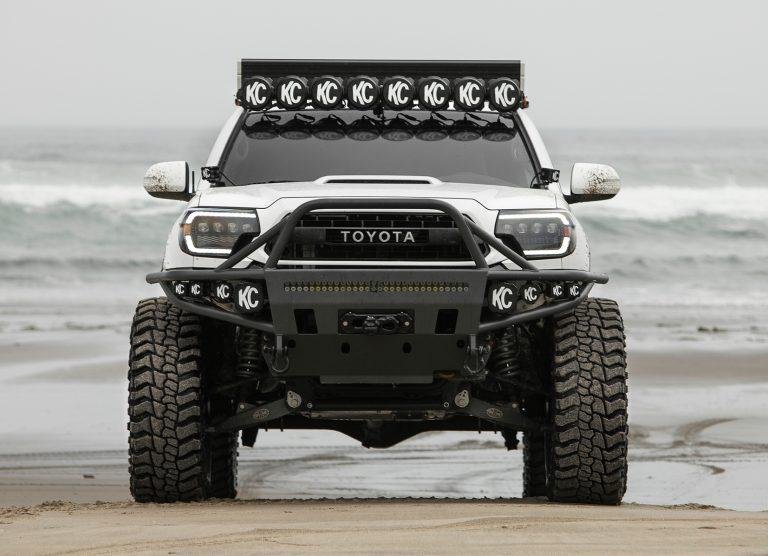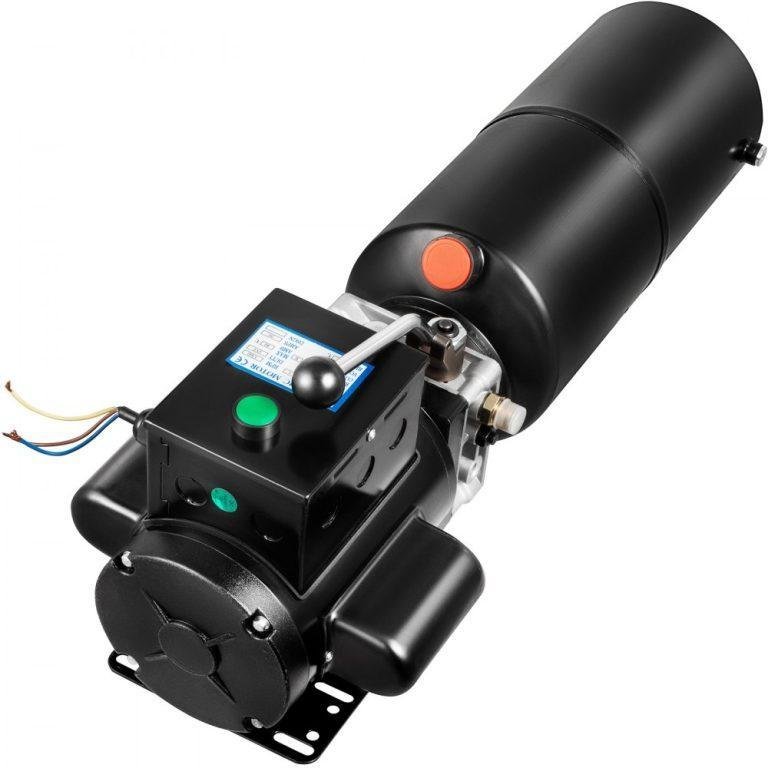The strongest rope available is a dyneema rope, known for its high tensile strength. With its exceptional strength-to-weight ratio, dyneema ropes are commonly used in various applications, including maritime, industrial, and outdoor activities.
These ropes are composed of a high-performance fiber known as dyneema, which is incredibly strong and resistant to stretching or breaking under heavy loads. Whether used in rock climbing, towing, or sailing, dyneema ropes offer unmatched durability and reliability. Their advanced composition and construction make them ideal for ensuring safety and providing peace of mind in demanding and high-pressure situations.
With dyneema ropes, you can be confident in the strength and longevity of your rope, no matter the task at hand.

Credit: indianexpress.com
Understanding The Key Factors Contributing To Rope Strength
Understanding the key factors that contribute to rope strength is crucial in determining which type of rope is the strongest. Factors such as material composition, construction method, and diameter play a significant role in the overall strength and durability of a rope.
By considering these factors, you can choose the appropriate rope for your specific needs.
There are several key factors that contribute to a rope’s strength, and understanding these factors is crucial in determining the strongest rope for your needs. We will delve into the material composition, construction method, strength to weight ratio, breaking strength, and resistance to abrasion of ropes, providing you with valuable insights to make an informed decision.
Material Composition:
- Natural fibers, such as hemp and sisal, provide good grip and are suitable for applications requiring moderate strength.
- Synthetic fibers, including nylon, polyester, and polypropylene, offer higher strength and durability, making them ideal for heavy-duty tasks.
- Steel cables, although less flexible, are exceptionally strong and commonly used in industrial applications.
Construction Method:
- Braided ropes consist of several strands intertwined, providing increased strength and flexibility.
- Twisted ropes are made by twisting individual strands together, offering good strength but slightly less flexibility compared to braided ropes.
- Kernmantle ropes feature a strong inner core (kern) surrounded by a protective outer sheath (mantle), combining durability and strength.
Strength To Weight Ratio:
- Kevlar ropes have a remarkable strength to weight ratio, making them suitable for high-risk applications where weight plays a crucial role.
- Dyneema ropes, known for their exceptional strength, are lighter than most other materials, making them popular in industries like aerospace and outdoor sports.
Breaking Strength:
- The breaking strength of a rope refers to the maximum tensile load it can sustain before breaking.
- Manufacturers typically provide breaking strength ratings for their ropes, allowing users to choose a suitable rope for their intended application.
Resistance To Abrasion:
- A rope’s resistance to abrasion is crucial for its lifespan, particularly in scenarios where it encounters friction or rough surfaces.
- Ropes with enhanced abrasion resistance, achieved through special coatings or additional protective layers, can withstand wear and tear better.
Understanding these key factors contributing to rope strength will assist you in selecting the most suitable rope for your specific requirements. Whether it’s for heavy-duty tasks, climbing, outdoor adventure, or industrial applications, considering the material composition, construction method, strength to weight ratio, breaking strength, and resistance to abrasion will help ensure optimal performance and efficiency.
Evaluating Different Rope Materials
When determining which rope is the strongest, it is important to evaluate different materials. By analyzing factors like tensile strength and durability, you can determine the most robust option for your needs. Consider materials such as nylon, polyester, and polypropylene to find the ideal rope for your specific application.
When it comes to determining the strength of a rope, the material it’s made from plays a crucial role. Each rope material has its own set of unique qualities and characteristics that make it suitable for specific applications. In this section, we will explore four commonly used rope materials and examine their strengths and weaknesses.
Let’s dive in and discover which rope material is the strongest for your needs.
Nylon Ropes:
- Nylon ropes are incredibly strong and widely used in various industries and recreational activities.
- They have excellent resistance to wear, abrasion, and shock loads, making them suitable for heavy-duty applications.
- Nylon ropes offer high elasticity, allowing them to absorb sudden shocks and strains without snapping.
- These ropes are also resistant to mildew, rot, and most chemicals, making them ideal for outdoor and marine use.
- Their only downside is that they have a tendency to absorb water, which can reduce their strength when wet.
Polyester Ropes:
- Polyester ropes, also known as dacron ropes, are highly durable and offer excellent resistance to uv rays, abrasion, and chemicals.
- They have low stretch characteristics, making them great for applications that require minimal elongation.
- Polyester ropes are also resistant to moisture, mildew, and rot, ensuring a longer lifespan.
- These ropes maintain their strength even when wet, making them a reliable choice for outdoor and marine environments.
- One drawback is that polyester ropes may be prone to slipping or creeping under heavy loads.
Polypropylene Ropes:
- Polypropylene ropes are lightweight and cost-effective, making them popular for general-purpose use.
- They have excellent resistance to chemicals, making them suitable for applications involving exposure to corrosive substances.
- Polypropylene ropes float in water, making them an excellent choice for boating, fishing, and water-related activities.
- However, polypropylene ropes have limited strength compared to other materials and tend to degrade under prolonged exposure to sunlight.
Dyneema Ropes:
- Dyneema ropes, made from ultra-high-molecular-weight polyethylene (uhmwpe), are renowned for their exceptional strength-to-weight ratio.
- These ropes are incredibly strong, often surpassing the strength of steel on a weight-for-weight basis.
- Dyneema ropes also offer high abrasion resistance and low stretch properties, making them ideal for high-performance applications.
- They are resistant to uv rays, water, chemicals, and extreme temperatures, ensuring excellent durability.
- The only drawback is that dyneema ropes can be quite expensive compared to other materials.
The strength of a rope depends on the material it is made from. Nylon ropes provide exceptional strength and resilience, while polyester ropes offer durability and resistance to uv rays. Polypropylene ropes are lightweight and affordable but have limited strength.
Dyneema ropes stand out with their impressive strength-to-weight ratio and durability. Considering your specific needs and requirements will help you determine which rope material is the strongest and most suitable for your intended use.
Comparing Construction Methods
Among various construction methods, comparing the strength of different ropes is a crucial aspect. Discover the ultimate choice for your construction needs by understanding which rope emerges as the strongest option. Explore the options and make an informed decision.
When it comes to choosing the strongest rope for your needs, it’s essential to consider the construction method used. Different construction methods offer varying levels of strength and durability. In this section, we will compare three common construction methods: twisted ropes, braided ropes, and kernmantle ropes.
Let’s explore the benefits and characteristics of each type.
Twisted Ropes:
- Twisted ropes are made by twisting together multiple strands of fibers.
- They are easy to manufacture and cost-effective.
- Twisted ropes generally have a high tensile strength, making them suitable for various applications.
- However, they can unravel easily if cut or damaged.
- Twisted ropes tend to have a slightly higher stretch factor compared to other construction methods.
Braided Ropes:
- Braided ropes consist of interwoven strands, creating a strong and durable structure.
- The braiding process enhances the rope’s strength and reduces stretch.
- Braided ropes are highly resistant to unraveling, even when cut or damaged.
- These ropes offer excellent grip and are often used in applications where a secure hold is crucial.
- However, braided ropes can be more expensive than twisted ropes due to the complexity of the manufacturing process.
Kernmantle Ropes:
- Kernmantle ropes have a durable, load-bearing core (kern) covered by a protective sheath (mantle).
- The core provides the primary strength of the rope, while the sheath protects it from external elements.
- Kernmantle ropes offer superior strength, making them ideal for critical applications.
- The protective sheath adds abrasion resistance and allows for better handling.
- These ropes are less prone to stretching and have a longer lifespan compared to other types.
Each construction method has its own advantages and characteristics. Twisted ropes are cost-effective and have high tensile strength, although they can unravel easily. Braided ropes offer excellent grip and resistance to unraveling, but they may be more expensive. Kernmantle ropes are known for their superior strength, durability, and minimal stretching.
Consider your specific requirements and choose the construction method that best suits your needs.
Testing The Strength Of Various Rope Types
Discover the strongest rope type by testing their strength. Compare various ropes to find the one with the highest durability and reliability.
Ropes are essential tools used in various applications, from securing heavy loads to climbing steep heights. But with the multitude of rope types available, the question arises: what rope is strongest? To find the answer, we will delve into the testing methods that determine the tensile strength, load-bearing capacity, and breaking strength of different rope varieties.
By understanding the results, you can confidently choose the right rope for your specific needs.
Tensile Strength Test:
- The tensile strength test measures a rope’s resistance to breaking under tension.
- During this test, a sample of the rope is subjected to a steadily increasing force until it fractures.
- The force at which the rope breaks provides an indication of its ability to withstand tension.
- Factors such as the material composition, diameter, and construction method contribute to a rope’s tensile strength.
- Different rope types, such as nylon, polyester, and polypropylene, exhibit varying degrees of tensile strength.
Load-Bearing Capacity Test:
- The load-bearing capacity test determines the maximum load a rope can carry without breaking.
- Various factors, including the rope’s diameter, construction type, and material properties, influence its load-bearing capacity.
- During the test, the rope is subjected to gradually increasing loads until it reaches its breaking point.
- Understanding a rope’s load-bearing capacity is crucial for applications that involve heavy loads and safety concerns.
- Different rope types display different load-bearing capacities, making it important to choose the appropriate rope for the task at hand.
Breaking Strength Test:
- The breaking strength test evaluates a rope’s ultimate strength by measuring the force required to cause it to break.
- This test is particularly crucial in scenarios where safety is paramount, such as rock climbing or lifting heavy objects.
- By determining a rope’s breaking strength, individuals can select a rope that can withstand the expected forces in their specific activities.
- It is important to note that the breaking strength can vary significantly between different rope types and even within the same category.
Understanding the results of these tests is vital when choosing the right rope for your intended use. Each rope type possesses unique characteristics that make it suitable for specific applications. By considering the tensile strength, load-bearing capacity, and breaking strength, you can make an informed decision and ensure safety and reliability in your endeavors.
Remember to carefully assess the requirements of your task and select a rope that aligns with your needs. So, the next time you’re wondering what rope is strongest, you’ll have the knowledge to make the best choice.
Factors Affecting Rope Strength In Different Environments
Discover the factors that impact rope strength in diverse environments and find out which rope is the strongest. Explore the influences that can affect a rope’s durability and make an informed decision for your specific needs.
Rope strength is a crucial consideration when choosing the right rope for your specific needs. Various factors can influence the strength of a rope, especially when used in different environments. Understanding these factors is essential to ensure the durability and reliability of the rope.
Let’s explore some key considerations for rope strength in different environments.
Moisture Resistance:
- Moisture can significantly affect the integrity and strength of ropes. Here’s how:
- Water absorption: Ropes that absorb water can become weaker and less reliable. They may stretch, lose their shape, or even deteriorate over time.
- Mold and mildew: Moist and damp environments can promote the growth of mold and mildew on ropes, leading to their degradation and reduced strength.
- Corrosion: Water exposure can cause corrosion in ropes, particularly those made with metal components. Corrosion weakens the rope structure, compromising its overall strength.
Uv Resistance:
- Exposure to ultraviolet (uv) rays can impact the strength of ropes. Consider the following aspects:
- Sunlight degradation: Ropes left exposed to the sun’s uv rays for prolonged periods can experience gradual degradation, leading to a reduction in strength over time.
- Fading and discoloration: Uv rays can cause ropes to fade and become discolored, but this is usually an aesthetic concern rather than affecting their actual strength.
- Fiber breakdown: Some fibers used in ropes are more susceptible to uv damage, leading to a decrease in their tensile strength.
Chemical Resistance:
- Depending on the environment, ropes may come into contact with various chemicals, which can affect their strength. Consider these factors:
- Chemical reactions: Certain chemicals can react with rope materials, leading to weakening, brittleness, or degradation of the rope structure.
- Abrasion resistance: Chemicals may act as abrasives, causing wear and tear on ropes. This can lead to a reduction in their overall strength and durability.
Temperature Resistance:
- Extreme temperatures can impact the strength of ropes. Take the following into account:
- Heat resistance: Excessive heat can cause rope materials to soften, melt, or degrade, compromising their strength. It’s essential to choose ropes specifically designed for high-temperature environments if required.
- Cold resistance: Extremely cold temperatures can make ropes more brittle and prone to breakage. Ropes designed for cold environments or with good cold resistance properties are preferable in such situations.
Understanding the factors that affect rope strength in different environments is crucial to make an informed choice. Consider the moisture resistance, uv resistance, chemical resistance, and temperature resistance properties of ropes to ensure their long-lasting performance. Selecting ropes that excel in these areas will contribute to improved safety, durability, and reliability for your specific applications.
Identifying The Strongest Rope For Different Applications
The strength of a rope varies depending on its material, construction, and intended use. Different ropes excel in different applications, such as nylon ropes for heavy loads, polypropylene ropes for water-related tasks, and steel cables for extreme situations. It’s important to identify the strongest rope suitable for your specific needs.
Rock Climbing
Rock climbing requires a rope that is strong, durable, and can withstand significant weight and tension. Here are some important factors to consider when choosing the strongest rope for rock climbing:
- Material: Opt for ropes made from high-quality materials such as nylon or polyester. These synthetic fibers offer excellent strength and are resistant to abrasion.
- Diameter: Thicker ropes generally have higher strength capacities. Look for ropes with diameters ranging from 9mm to 11mm for rock climbing.
- Static vs. Dynamic ropes: Dynamic ropes are designed to absorb the impact of falls, while static ropes are used for static loads. Choose a dynamic rope for rock climbing, as it provides better shock absorption.
- Uiaa certification: Ensure that the rope is certified by the union internationale des associations d’alpinisme (uiaa), which guarantees its quality and safety standards.
Rigging
In rigging applications, ropes are used to support, secure, or lift heavy loads. To identify the strongest rope for rigging, consider the following:
- Construction: Look for ropes with a braided or twisted construction, as they offer higher tensile strength. Braided ropes tend to be stronger than twisted ones.
- Material: Choose ropes made from strong synthetic fibers like polypropylene or polyester. These materials provide excellent resistance to uv rays, abrasion, and chemicals.
- Break strength: Pay attention to the break strength rating of the rope. The higher the break strength, the more weight it can handle. Ensure the rope’s break strength exceeds the maximum load it will bear in your specific rigging application.
- Safety factor: It’s essential to apply a safety factor when choosing a rope for rigging. A safety factor of 5:1 is commonly recommended to account for variables such as environmental conditions and potential shock loads.
Marine Activities
Ropes used in marine activities must possess high strength, resistance to saltwater corrosion, and the ability to withstand constant exposure to harsh conditions. Here’s what to consider when identifying the strongest rope for marine activities:
- Material: Opt for ropes made from synthetic fibers like polyester or polypropylene, as they exhibit excellent strength and durability in marine environments.
- Resistance to uv and saltwater: Choose ropes that are uv-resistant and have a high resistance to saltwater corrosion. Look for ropes with coatings or treatments that provide added protection against these elements.
- Braided construction: Ropes with a braided construction offer better strength and flexibility, making them ideal for marine applications.
- Size and diameter: Consider the diameter of the rope, depending on the specific marine activity. Thicker ropes generally offer higher strength capacities and are easier to handle.
Heavy-Duty Hauling
When it comes to heavy-duty hauling, you need a rope that can withstand immense tension and lift heavy loads. Here are some key factors in identifying the strongest rope for heavy-duty hauling:
- Material: Look for ropes made from materials like high-strength polyester or aramid fibers (such as kevlar). These fibers offer exceptional strength and durability.
- Construction: Opt for ropes with a braided or twisted construction, as they provide higher strength compared to other types of constructions.
- Break strength: Pay close attention to the break strength of the rope. Ensure it meets or exceeds the maximum load it will bear during heavy-duty hauling operations.
- Abrasion resistance: Consider ropes with coatings or treatments that enhance their resistance to abrasion, as heavy loads and friction can cause wear and tear.
Remember, each application requires a rope specifically designed for its intended purpose. By considering the factors mentioned above, you can choose the strongest rope suited for rock climbing, rigging, marine activities, or heavy-duty hauling. Stay safe and enjoy your endeavors!
Selecting The Right Rope For Specific Strength Requirements
Choosing the strongest rope to meet specific strength requirements can be a crucial decision. With careful consideration of materials, construction, and intended use, you can find the perfect rope to tackle any task.
Ropes come in various types and strengths, each designed to serve specific purposes. Whether you are into weightlifting, rescue operations, mountaineering, or participating in sailing events, it is crucial to select the right rope that can withstand the required strength.
In this section, we will explore the characteristics and uses of ropes in each of these domains.
Weightlifting:
- Nylon and polyester ropes are commonly used in weightlifting due to their high tensile strength.
- These ropes can withstand heavy loads and provide excellent grip and durability.
- Nylon ropes offer superior flexibility, while polyester ropes offer increased resistance to moisture and uv radiation.
Rescue Operations:
- Ropes used in rescue operations must be strong and reliable to secure both rescuers and victims.
- Dynamic ropes, made of nylon, are favored for their ability to absorb energy and withstand shock loads.
- Low stretch static ropes are typically used for rappelling and hauling operations.
Mountaineering:
- Climbing ropes used in mountaineering need to be strong, lightweight, and durable.
- Dynamic ropes, with their ability to absorb energy from falls, are the preferred choice.
- Kernmantle ropes, consisting of a strong core and a protective sheath, provide increased durability and resistance to abrasion.
Sailing Events:
- Ropes in sailing events, commonly referred to as lines, have specific functions depending on the sailing activity.
- Polyester ropes are commonly used for general purposes due to their resistance to uv radiation and moisture.
- Dyneema ropes, known for their high strength-to-weight ratio, are used in high-performance racing boats.
In each of these domains, selecting the right rope ensures both safety and optimal performance. Consider the specific strength requirements, environmental conditions, and the durability of the rope to make an informed choice. Remember, a well-chosen rope can make all the difference in your activity, providing confidence and reliability when you need it the most.
How To Properly Care For And Maintain Ropes
Learn how to properly care for and maintain ropes to ensure their longevity. Discover which type of rope is the strongest and suitable for your needs. Follow these essential guidelines for rope maintenance and get the most out of your investment.
Ropes are essential tools for various activities, including climbing, boating, and camping. To ensure their longevity and reliability, it is crucial to take proper care of them. By following these cleaning techniques, storing practices, and regular inspection and maintenance tips, you can keep your ropes in excellent condition for extended periods:
Cleaning Techniques:
- Remove dirt and debris: Shake off any loose dirt or debris from the rope before cleaning.
- Handwashing: Fill a basin or sink with lukewarm water and a mild detergent. Gently agitate the rope in the solution.
- Rinse thoroughly: Rinse the rope with clean water to remove all soap residue.
- Drying: Hang the rope in a well-ventilated area, away from direct sunlight. Ensure it is completely dry before storing.
Storing Practices:
- Coiling: After cleaning and drying the rope, coil it neatly following its natural curve.
- Avoid knots: Do not store ropes with knots, as they can weaken the rope and create stress points.
- Keep away from dampness: Store ropes in a dry environment to prevent mold and mildew growth.
- Suspension: Hang the coiled rope on a rope bag or hanger to protect it from contact with the ground.
Regular Inspection And Maintenance:
- Visual inspection: Regularly inspect the rope for signs of wear, such as frayed or fuzzy areas, cuts, or discoloration.
- Check for core damage: Gently squeeze the rope lengths to feel for inconsistencies in the core, which may indicate internal damage.
- Retire worn ropes: If the rope shows significant wear, it is safer to retire it and replace it with a new one.
- Lubrication: For synthetic ropes, use a rope lubricant recommended by the manufacturer to reduce friction and extend its lifespan.
Remember, proper care and maintenance of ropes are essential to ensure both their performance and your safety. By routinely cleaning, storing appropriately, and inspecting your ropes, you can maximize their strength and longevity, enabling you to enjoy your outdoor adventures confidently.
Frequently Asked Questions On What Rope Is Strongest?
What Is The Strongest Natural Rope?
Manila rope is the strongest natural rope available. Made from the fibers of the abaca plant, it has exceptional strength and durability.
Which Is Stronger Braided Or Twisted Rope?
Braided rope is generally stronger than twisted rope. The intertwining of multiple strands in a braided rope increases its overall strength and durability. The distribution of force across the different strands helps to prevent breakage under heavy loads. Twisted ropes, on the other hand, are made by twisting fibers or strands together, which can create weak points and reduce overall strength.
The twisting process can also cause the rope to unravel more easily. Therefore, when it comes to strength, braided rope is the better choice.
What Rope Can Hold Human Weight?
A rope that can hold human weight should be strong and durable. It is important to choose a rope made from high-quality materials such as nylon or polyester. These types of ropes have excellent tensile strength and can withstand heavy loads.
Look for ropes with a high weight capacity, typically measured in pounds or kilograms. It is also essential to ensure that the rope is properly rated and certified for human use. A rope with a reliable breaking strength and safety factor is crucial for ensuring the individual’s safety during activities such as climbing, rappelling, or rescue operations.
Additionally, it is essential to inspect the rope regularly for any signs of wear or damage and to follow proper safety guidelines when using it. Remember, using the right rope is crucial for safely supporting human weight during various activities.
What Is The Strongest 3 Strand Rope?
The strongest 3 strand rope is typically made from materials like nylon or polyester. These ropes offer excellent strength and durability for various applications. They can withstand heavy loads and resist wear and tear. Nylon ropes are known for their high strength-to-weight ratio and resistance to uv rays, chemicals and abrasion.
On the other hand, polyester ropes have high tensile strength and low stretch characteristics, making them ideal for tasks requiring stability and minimal elongation. Both of these ropes are commonly used in industries such as construction, fishing, and marine activities.
They provide reliable performance and ensure the safety of the users. Whether you need a strong rope for heavy-duty tasks or outdoor adventures, nylon and polyester ropes are excellent options to consider.
Conclusion
After exploring the different types of ropes and their strengths, it is evident that determining the strongest rope is not a simple task. Each type of rope has its own unique strengths and weaknesses, making them ideal for different purposes.
For those seeking maximum strength and durability, synthetic ropes like spectra and dyneema prove to be the top contenders. With their high strength-to-weight ratios and resistance to chemicals and uv radiation, they are perfect for demanding applications such as sailing and mountaineering.
Natural ropes like manila and sisal, on the other hand, offer excellent flexibility and are more affordable options for everyday use. Ultimately, the choice of the strongest rope depends on the specific requirements of the task at hand. By considering factors such as strength, flexibility, and affordability, you can make an informed decision on which rope will best suit your needs.
So, next time you find yourself in need of a rope, remember these factors and choose wisely.






